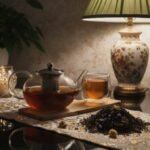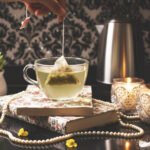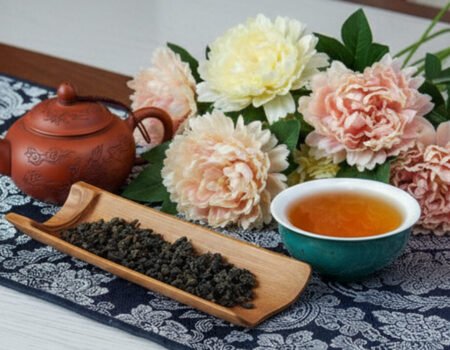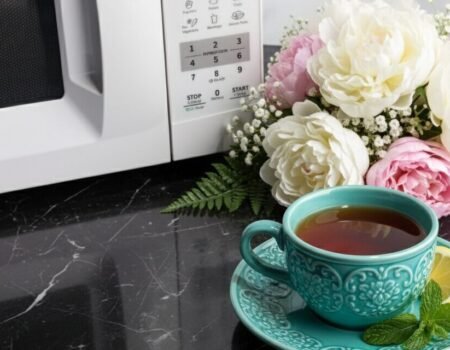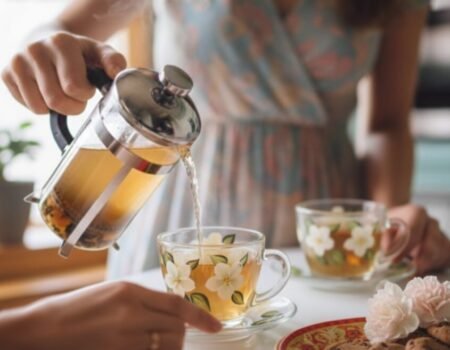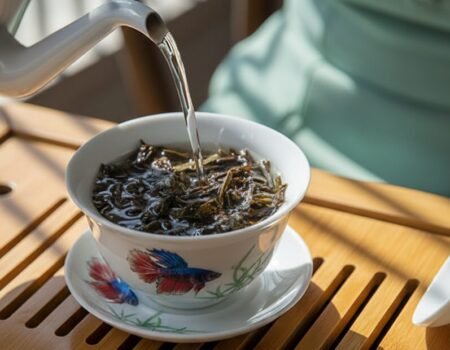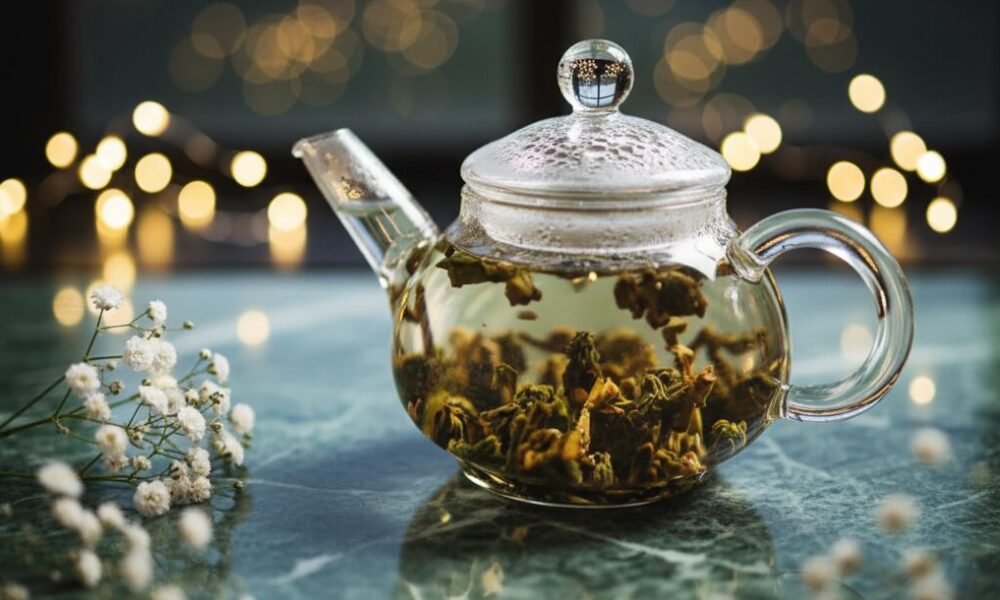
How to Brew Loose Leaf Tea Without an Infuser – Easy Steps for Making Delicious Tea
Index
Have you ever wanted to enjoy loose leaf tea but found yourself without an infuser?
Loose leaf tea contains more essential oils than bagged tea, giving you better flavor and aromas. These whole leaves need room to expand as they steep, which creates a richer taste.
This guide will show you how with simple items from your kitchen you can brew loose leaf tea without an infuser.
Key Takeaways
- Common kitchen items like coffee filters, sieves, and mason jars work perfectly for brewing loose leaf tea without special equipment.
- You can make a DIY tea infuser by folding aluminum foil into a pouch with small holes poked through it.
- Different teas need specific steeping times: black tea needs 3-5 minutes, green tea 1-2 minutes, and herbal teas at least 5 minutes.
- Use the right amount of tea leaves: 1 teaspoon per 6 ounces for black and green tea, 2 teaspoons for white tea.
- When making tea with milk, always brew the tea first, then add milk afterward to prevent cooling the water too quickly.
Simple Tools to Brew Loose Leaf Tea Without an Infuser
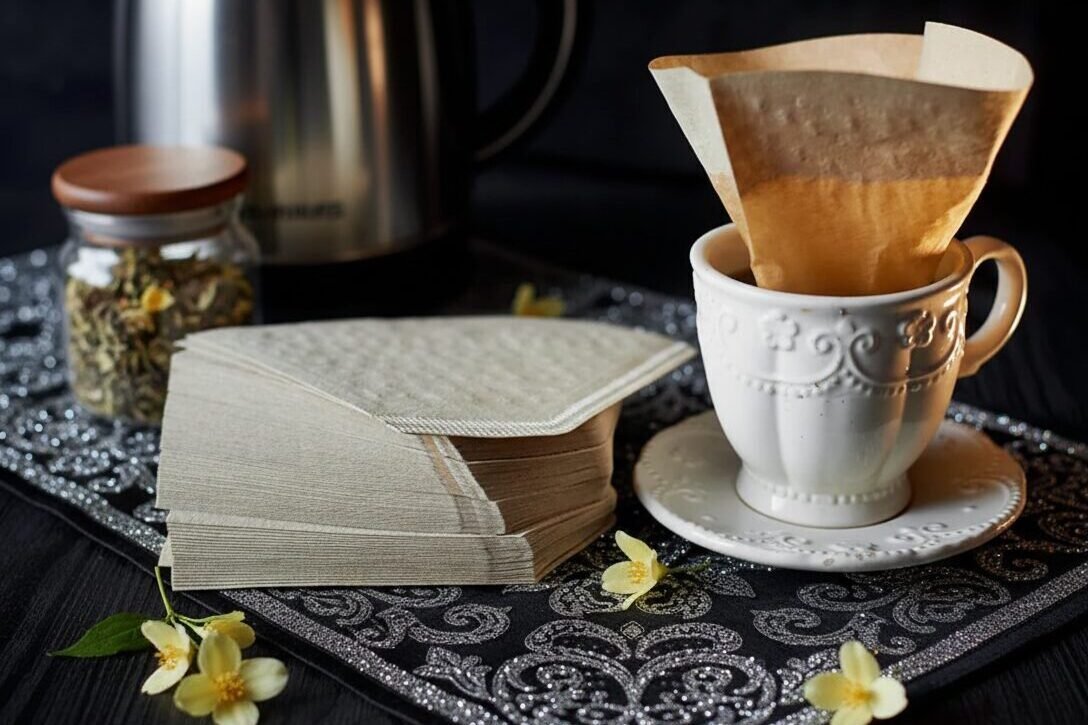
You don’t need fancy gear to enjoy loose leaf tea at home. Several basic items from your kitchen can serve as perfect substitutes for a standard tea infuser.
Coffee Filter or Paper Towel
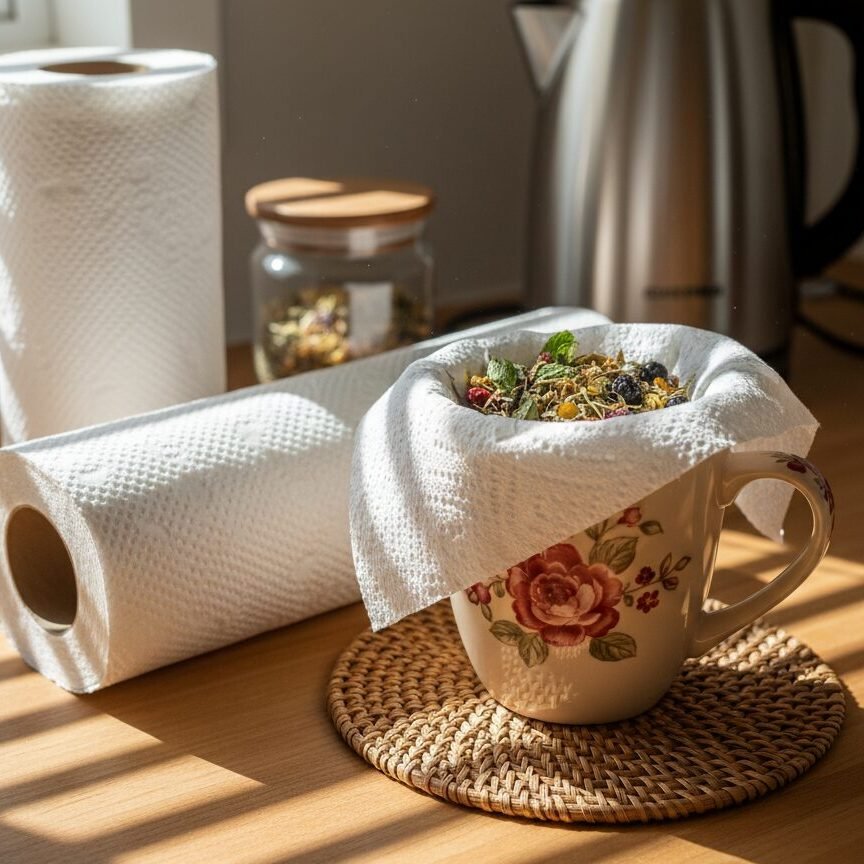
Coffee filters offer a simple solution for brewing loose leaf tea without special equipment. First, rinse your filter with hot water to eliminate any paper taste that might affect your tea flavor.
Next, place the filter over your mug and add 1-2 teaspoons of loose leaf tea inside it. Pour hot water in circular motions over the tea leaves, allowing them to expand and release their full flavor.
The filter catches all the tea particles while letting the liquid flow through.
Paper towels work as a backup option if you lack coffee filters. Fold a clean paper towel into quarters and place it over your cup. Add your tea leaves to the center and pour water slowly to avoid tearing.
Both methods create minimal mess and allow for easy cleanup – just discard the filter or paper towel after your tea reaches the desired strength. These everyday kitchen items transform into practical tea strainers with almost no effort.
Kitchen Sieve or Sifter
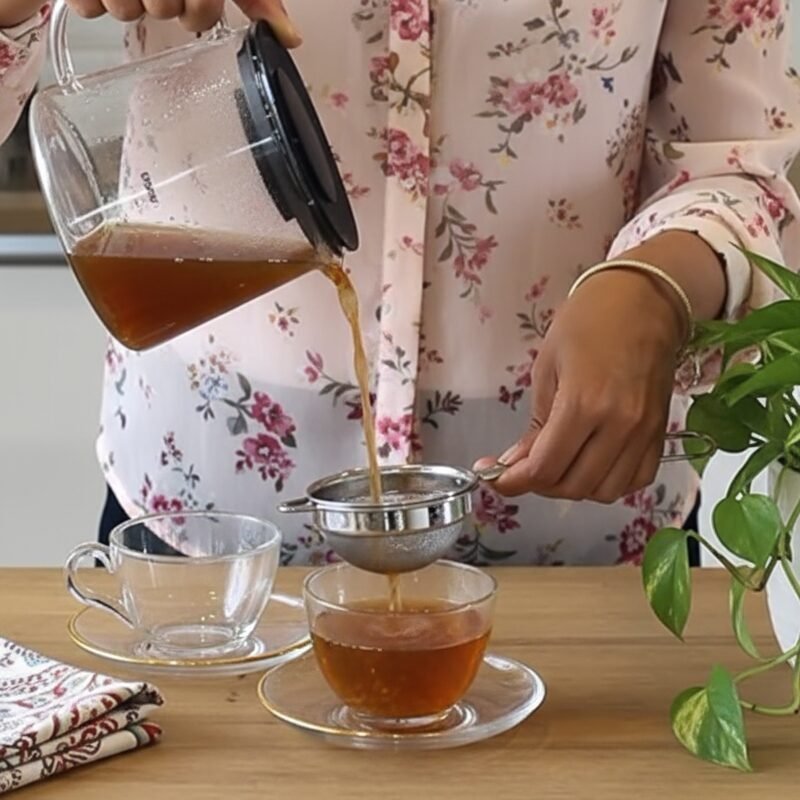
A regular kitchen sieve works perfectly for brewing loose leaf tea without fancy equipment. Simply place your tea leaves in a pot or container, add hot water, and let the leaves steep based on the type of tea.
Once your tea reaches the right strength, hold the sieve over your cup and pour the brewed tea through it. The mesh catches all the leaves while allowing the flavorful liquid to flow into your mug.
This method gives you complete control over how strong you like your tea.
For an even easier approach, rest your sieve directly on top of your mug if it fits well. Put the loose tea leaves in the sieve, then pour hot water through them into the cup. The tea will infuse as the water passes through the leaves.
This creates less mess since the wet leaves stay contained in the sieve rather than floating freely in your pot. Most kitchens already have a small mesh strainer, making this one of the most practical ways to brew loose-leaf tea without a special infuser.
Mason Jar
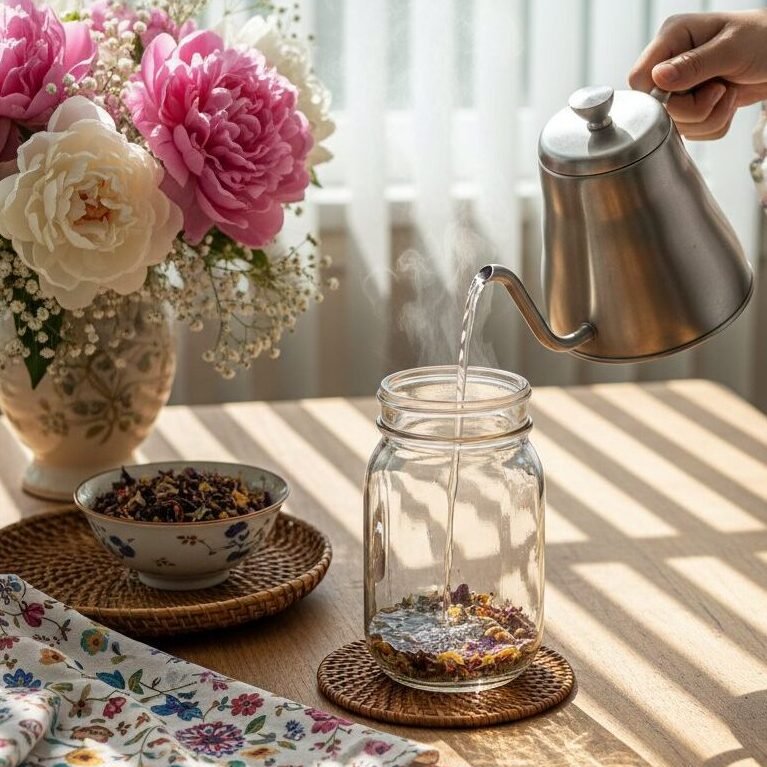
Mason jars offer a simple solution for brewing loose leaf tea without special equipment. These glass containers work perfectly because they can handle hot water and have lids to keep heat in.
You’ll need to add your tea leaves directly to the jar, pour hot water over them, and let them steep. The clear glass lets you watch your tea develop its color and strength. For serving, secure the lid loosely on top and use oven mitts to protect your hands from the heat.
When pouring, keep the lid slightly ajar to hold back the leaves while allowing the liquid to flow into your cup.
Creative DIY Methods for Brewing Tea
If you enjoy a bit of crafting, you can create your own effective tea infusers using materials you likely already have. Here are a few popular options to get you started.
Muslin or Cheesecloth Infuser/teabag
Creating a reusable infuser from muslin or cheesecloth gives you a sustainable alternative to disposable filters. Cut a small square of fabric, about 4-5 inches on each side. Place 1-2 teaspoons of your loose leaf tea in the center of the fabric, then gather the corners together above the tea leaves. Tie the bundle securely with kitchen string, leaving enough length to hang over the edge of your cup. This homemade infuser functions just like store-bought versions, allowing water to flow through the fabric while keeping leaves contained.
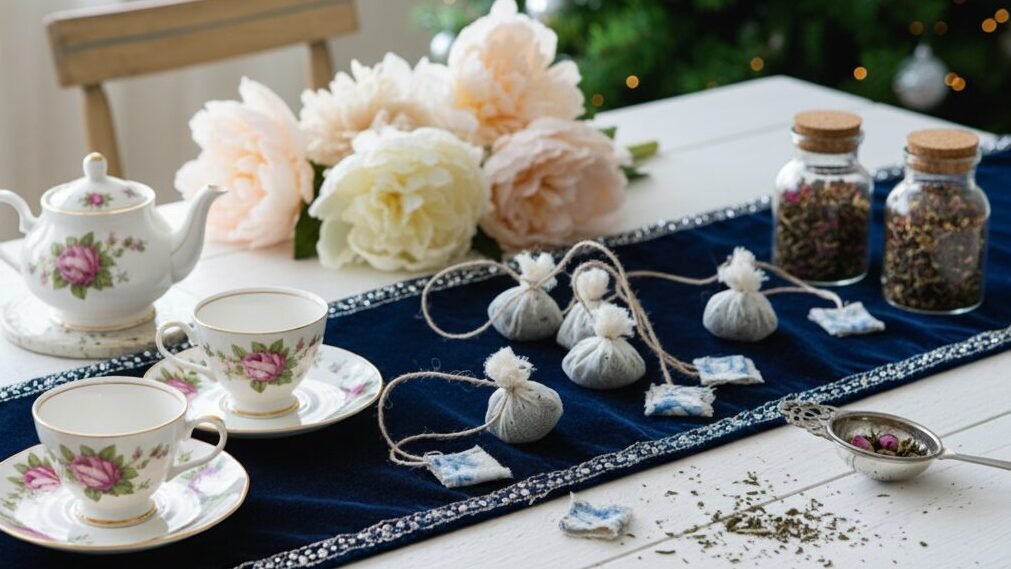
This method works particularly well for delicate teas like white and green varieties, as the natural fabric doesn’t interfere with subtle flavors. After steeping, simply untie the string, empty the used leaves into your compost, and rinse the fabric for your next brew. Muslin and cheesecloth can be washed and reused dozens of times, making them both economical and environmentally friendly. You can even prepare several bundles at once for busy mornings or when serving tea to guests.
Aluminum Foil Infuser
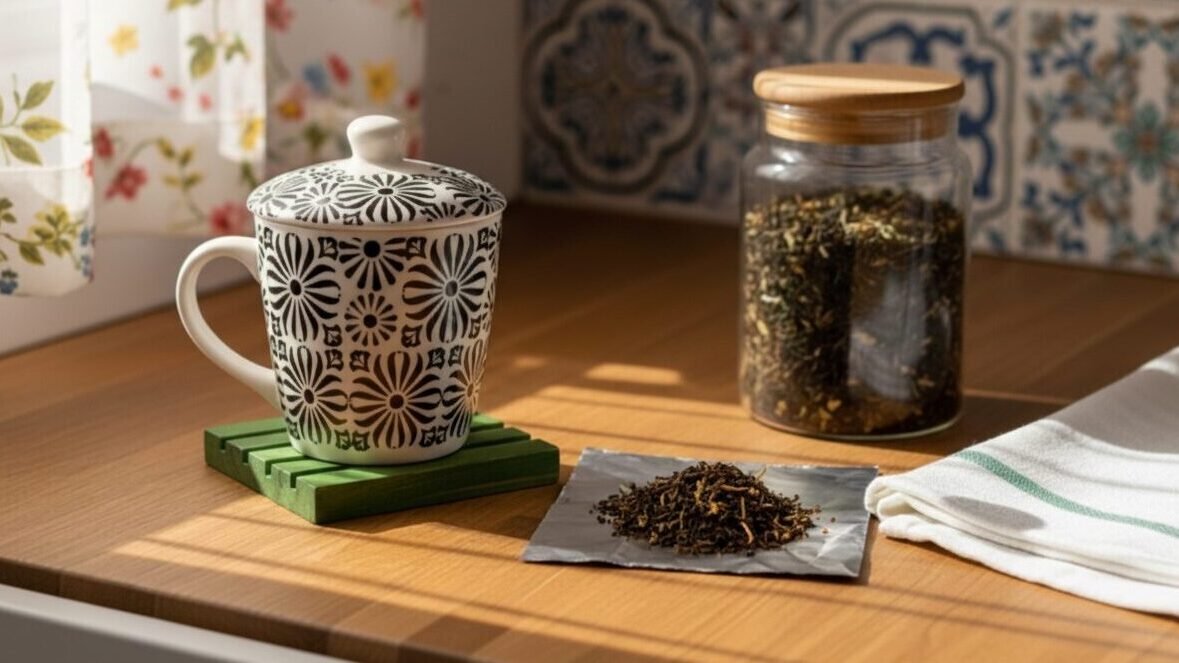
Making a DIY tea infuser with aluminum foil offers a simple solution for brewing loose leaf tea at home. Start by folding a small square of foil, then place your desired amount of tea leaves in the center.
Twist the top edges together to create a secure pouch that holds your tea. Next, grab a toothpick and poke 8-10 small holes throughout the foil packet. These openings allow water to flow through while keeping the leaves contained.
This homemade tool works just as well as store-bought options for most tea types. Place your foil infuser in your cup or mug before pouring hot water over it. The water will circulate through the holes, extracting flavor from your tea leaves.
The foil pouch traps the leaves inside, giving you a clean cup without floating bits. Many tea drinkers find this method particularly useful for black tea and green tea varieties when traveling or in a pinch.
Brewing Directly in Your Cup
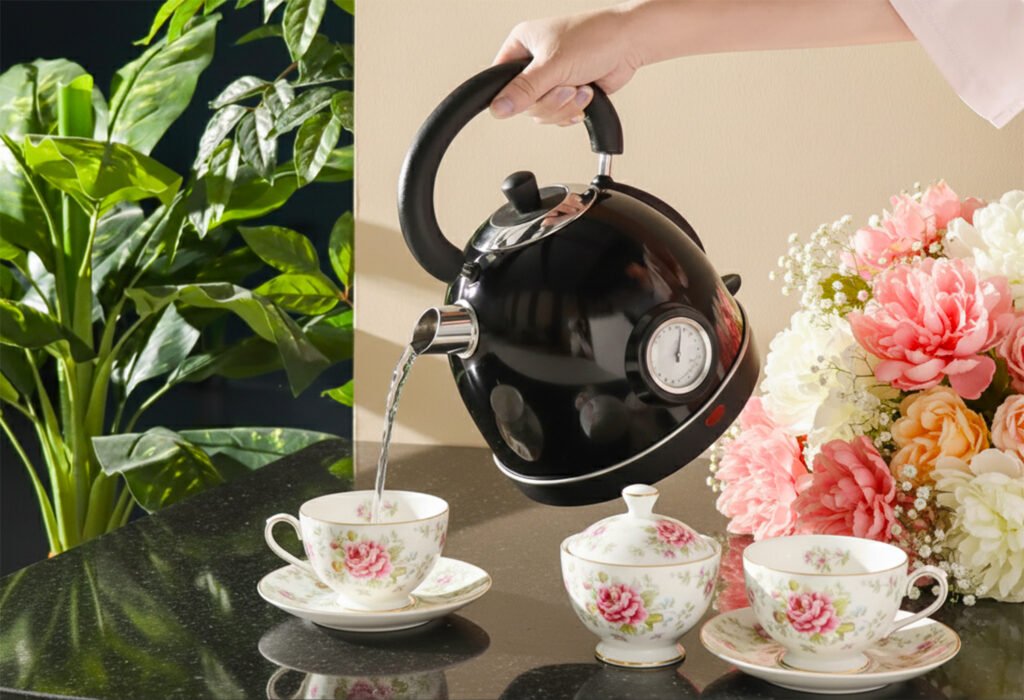
Brewing loose leaf tea right in your cup offers the simplest solution for tea lovers without special equipment. You place a teaspoon of loose leaf tea directly into your mug and pour hot water over it.
The tea leaves will sink to the bottom as they absorb water, creating a flavorful brew. This method works perfectly for Sobacha and Kuromamecha, allowing their nutty and toasty flavors to fully develop.
The leaves stay at the bottom while you sip from the top, though you might get small bits in your last few sips.
For the best results, use a cup with more width than height to give leaves room to unfurl. Simply drink until you reach the leaves at the bottom, or use your lips as a natural filter while drinking.
This approach creates less waste than tea bags and lets you enjoy the full taste profile of your tea. Next, we’ll look at key tips for brewing the perfect cup of tea regardless of which method you choose.
Tips for the Perfect Brew Without an Infuser
Making perfect tea without special tools depends on using the right amount of leaves for your water. You need proper timing too – steep black tea for 3-5 minutes while green tea needs just 2-3 minutes for the best flavor.
Proper Tea-to-Water Ratio
Getting the right balance of tea leaves to water makes all the difference in your cup. Each tea type needs a specific amount for the best flavor. Black and oolong teas require 1 level teaspoon per 6 ounces of water.
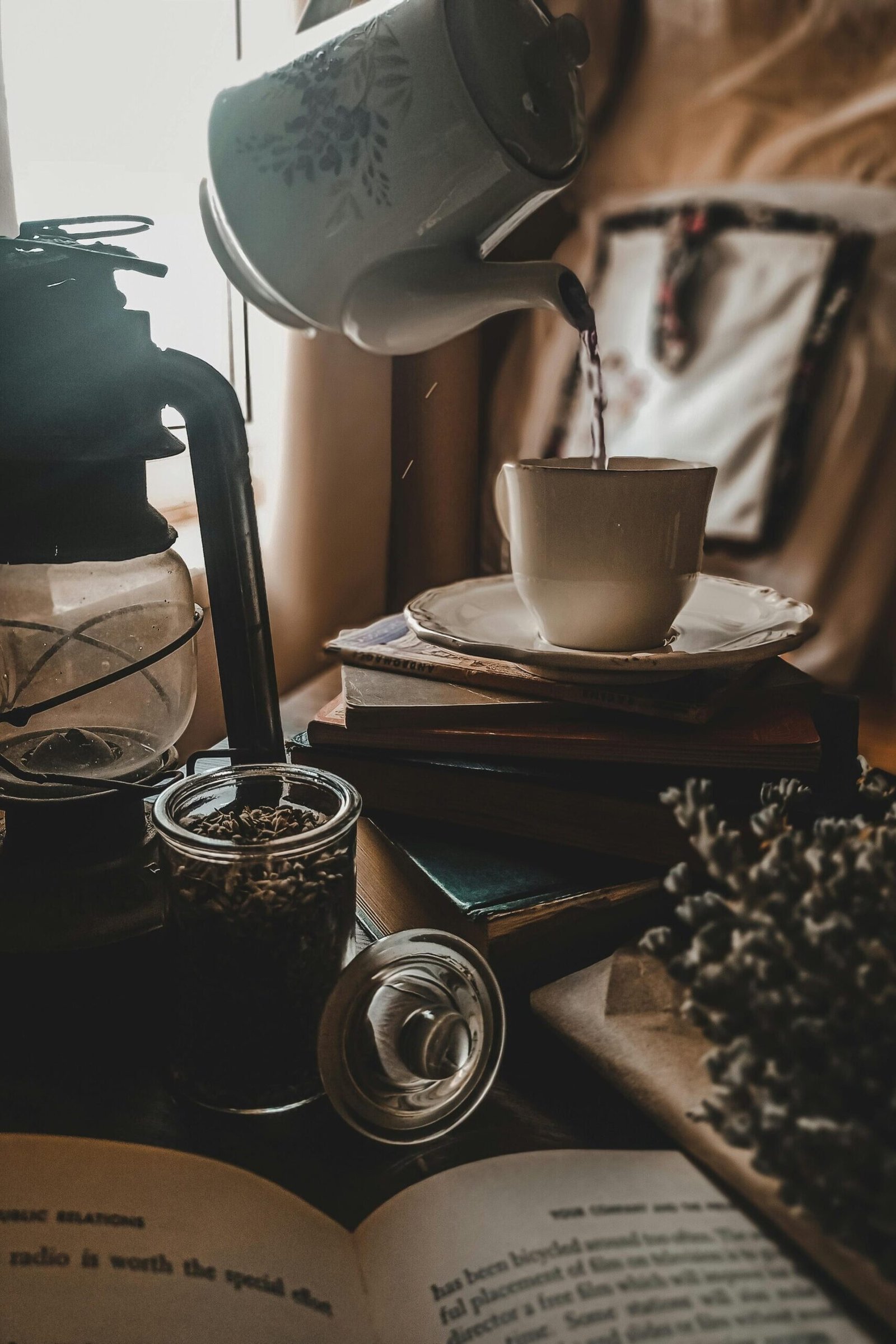
Green tea also works best with 1 level teaspoon per 6-ounce cup. White tea needs more leaves – about 2 level teaspoons per 6 ounces to release its subtle flavors. For stronger brews like pu-erh or herbal teas, use 1 heaping teaspoon per 6 ounces of water.
Too many leaves can make your tea bitter, while too few create a weak brew. You can adjust these amounts based on your taste preferences. The strength of your tea depends on both the amount of leaves and steep time.
Most people find these ratios create the perfect balance of flavor without needing fancy equipment. Next time you brew loose leaf tea without an infuser, start with these measurements for a flavorful cup.
Steeping Time Recommendations
Different tea types need specific steeping times to release their best flavors. Black tea requires 3-5 minutes to develop its rich taste, while delicate green tea needs only 1-2 minutes to avoid bitterness.
White and oolong teas both benefit from a 2-3 minute steep. For deeper flavors, pu-erh tea should steep for 5 minutes, and herbal blends need at least 5 minutes to fully infuse the water.
A simple kitchen timer helps track these times perfectly, ensuring your loose leaf tea delivers its optimal taste every time.
When to add Milk
Adding milk to your loose leaf tea creates a smooth, rich flavor that many tea lovers enjoy. You’ll want to brew your tea first using any of the methods we’ve discussed. Use 1-2 teaspoons of loose tea leaves for each 6-ounce cup of hot water.
Let the tea steep for the right amount of time to release its full flavor. Pour your brewed tea through your chosen straining method into your cup or pot.
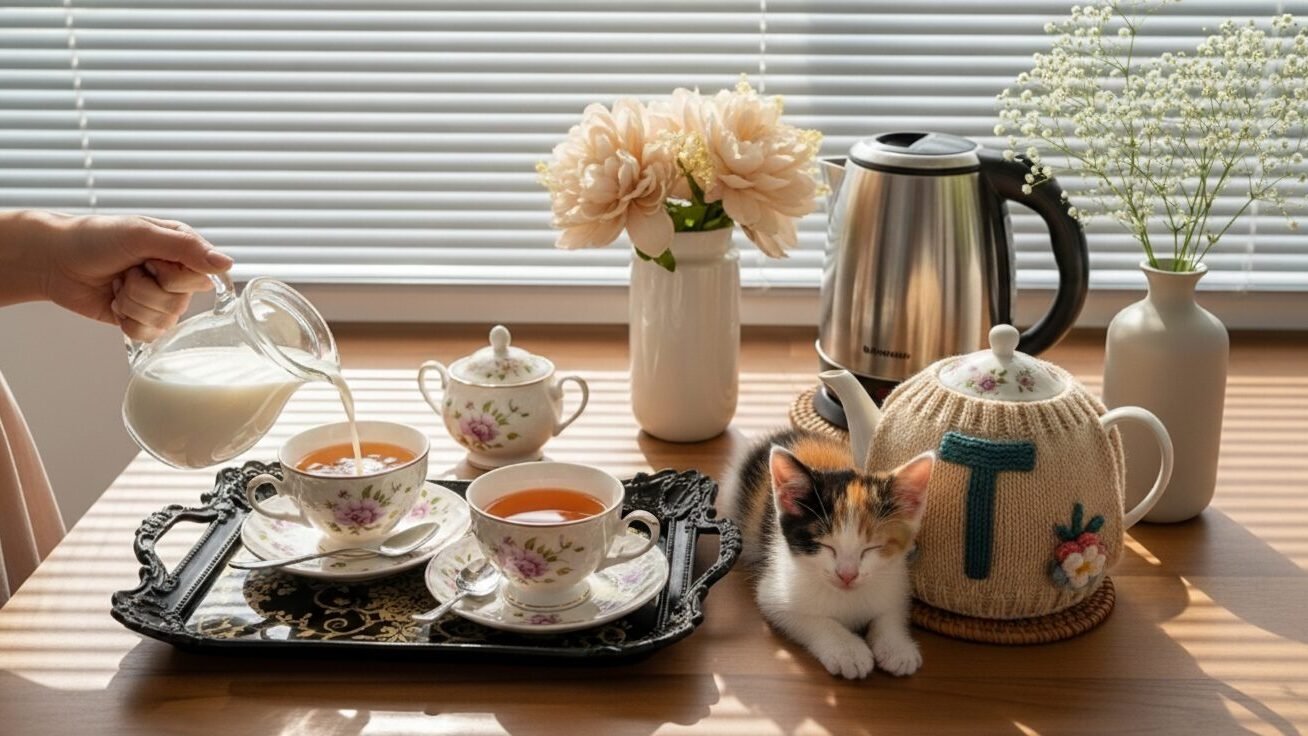
Only then should you add milk to your cup. This order matters because adding milk first can cool the water too much and prevent proper steeping. The ratio of milk to tea depends on your taste, but start with a small splash and adjust as needed.
For a stronger cup, use more tea leaves rather than extending steep time, which can make your brew bitter. Next, we’ll wrap up with some final thoughts on making loose leaf tea without special equipment.
Conclusion
Brewing loose leaf tea without an infuser opens up a world of tea enjoyment with simple household items. You can create perfect cups using coffee filters, kitchen sieves, or even a homemade foil pouch.
Each method lets you experience the full flavor that loose leaf varieties offer compared to tea bags. The right water temperature and steeping time matter more than fancy equipment for making delicious tea.
Try these easy techniques today and discover your favorite way to enjoy loose leaf tea without special tools.
FAQs
1. What’s the easiest way to clean up the wet leaves without clogging my sink?
After brewing, let the leaves settle for a moment. For methods like brewing directly in a pot or jar, you can pour the bulk of the leaves into a compost bin or trash can. To catch the remaining leaves, place a kitchen sieve or coffee filter over your sink drain before rinsing the container. The DIY muslin/cheesecloth and foil methods are the cleanest, as you can simply empty the pouch and rinse.
2. Which method works best for very fine teas, like rooibos, to avoid getting sediment in my cup?
For fine-particle teas, the coffee filter or a double-layered paper towel method is the most effective. The dense paper traps nearly all sediment. A tightly-woven muslin or cheesecloth pouch is also a great option. A standard kitchen sieve may still let very small particles through.
3. Can I re-steep my loose leaf tea using these infuser-free methods?
Absolutely! Many high-quality loose leaf teas (especially oolongs and green teas) are designed for multiple infusions. Simply keep the leaves in your chosen tool (sieve, DIY pouch, etc.) and pour more hot water over them. You may need to slightly increase the steeping time for second or third brews to extract the full flavor.
4. Will using a paper towel, coffee filter, or aluminum foil change the taste of my tea?
If done correctly, these should not noticeably affect the flavor. For coffee filters and paper towels, rinsing them with a little hot water before adding your tea leaves helps remove any paper residue or taste. Food-grade aluminum foil is inert and won’t leach any flavor into your tea during the short steeping process.
5. I’m traveling and don’t have a sieve. What’s the most portable solution?
The DIY aluminum foil infuser is an excellent travel hack, as foil is easy to find and pack. Alternatively, you can pre-make a few muslin or cheesecloth teabags with your favorite tea before you leave. If you have nothing else, brewing directly in your cup and using your lips as a filter while you sip is the simplest method of all.
References
- https://danfetea.com/blogs/tea-blog/how-to-brew-loose-leaf-tea-without-an-infuser?srsltid=AfmBOorfxoVamwx_jZZzkYQhmVwDANT1mCoGWh3ocYYZOA58l4mHFAj8 (2023-03-16)
- https://thegildedteafling.com/blogs/tea-tips/how-to-brew-loose-leaf-tea-without-an-infuser-7-best-methods?srsltid=AfmBOopN0CJUpwEGAaSY99fBGlbTeKjZ8Ay4qRVmR7R6mnZCujonGV75
- https://senbirdtea.com/blogs/teaware/4-ways-to-brew-loose-leaf-tea-without-an-infuser?srsltid=AfmBOop4PSx5Lpxi4XB-xkH5P1giDEFl00Sdsg6rDSObizLnbDFGjbnP
- https://artfultea.com/blogs/101/how-to-prepare-tea?srsltid=AfmBOoqjOUjzRlRB6knLVyNr9HfWBTqpYuQvnfD3FEZykWutW0tMCVzB
- https://senbirdtea.com/blogs/teaware/4-ways-to-brew-loose-leaf-tea-without-an-infuser?srsltid=AfmBOorgnbivEyVSdFZ57NuurgI4bBChcKGpU5Q1xGhCVl0CumSN84bg
- https://nioteas.com/blogs/tea-facts/how-to-make-loose-leaf-tea-without-an-infuser?srsltid=AfmBOop4EQ4hG97N0pPYUCjHLIOAABr3X1Gbn_BnF_HEc46aY4GU8Pef (2022-07-25)
- https://teatsy.com/en/blogs/blog/how-to-brew-loose-leaf-tea-without-an-infuser?srsltid=AfmBOop-XtokYc_wzlnaOPaUNvqFAhNhenkIWCtlLdTgEHMExCkrrlga (2024-05-17)
- https://artfultea.com/blogs/101/how-to-prepare-tea?srsltid=AfmBOorUHHz11FCebG6GeCsL9vCYCeLEJVjBW-wlWIdiMSfsVhxBSjH6
- https://artfultea.com/blogs/101/how-to-prepare-tea?srsltid=AfmBOoqraVW9A9hFPKVNAtKXJUv_VIdNhFo9CIqPe7VGOTH-_v3r-fSL
- https://artfultea.com/blogs/101/how-to-prepare-tea?srsltid=AfmBOoo1gVToKtwOGif5_3qkZasjDTZ10oJv_3Zl7VhDphI1hbnXHYdt
- https://artfultea.com/blogs/101/how-to-prepare-tea?srsltid=AfmBOorPvvvcBgsxZcHS0J-LnTKW2Ei42K4lL5Vxza8QtHxkE9wQlxUb
- https://www.plumdeluxe.com/blogs/blog/how-to-make-loose-leaf-tea-without-an-infuser?srsltid=AfmBOorQgiS3YVDjf0Xj9lUsyeJ7R5Pmntm4rD0exGX5-4bnS4-7xVB3

